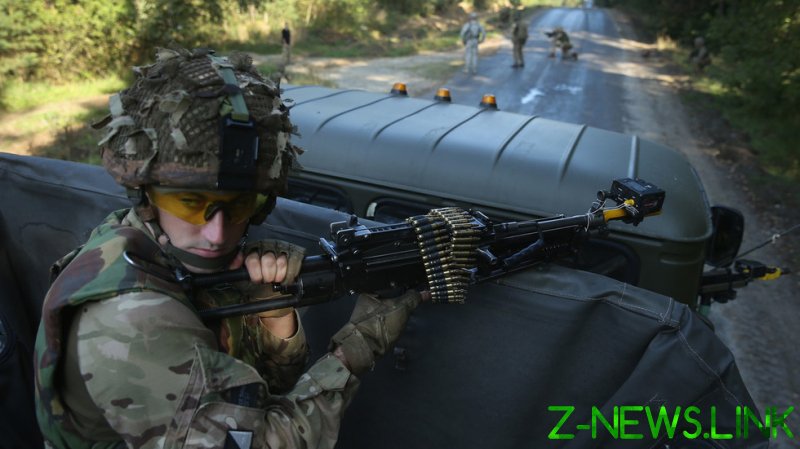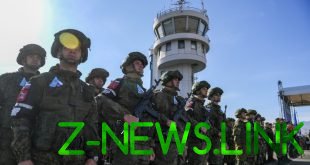
Red lines are about deterrence. The purpose of drawing them in the first place is to communicate crucial security interests and the severe consequences that would ensue if they were undermined. In essence, Moscow’s ultimatums are intended to stop the West from making a dangerous miscalculation.
Deterrence rests on the three Cs: capability, credibility, and communication. Russia has the military capability to act if its red lines are crossed, it’s demonstrated credibility in terms of its preparedness to act on threats, and it knows the specifics must be communicated clearly to avoid the West making any mis-steps that would necessitate a forceful response. However, the weakness in its red lines is the current lack of detail as to what would happen if another nation took a step too far.
Fighting NATO’s ‘salami tactics’
Red lines must be specific, as they are a countermove against the slow creep of Western foreign policy, which deploys ‘salami tactics.’ These, as the name suggests, entail conquest via the cutting off of thin slices. No one action is so outrageous it forms the pretext for war, but, one day, you turn around and realize how much ground you’ve lost.
Salami tactics are an appealing option for expansionist actors like NATO, which pursues limited and repetitive expansions to gradually create new realities on the ground. Such tactics avoid rapid escalation and mute opposition from adversaries and allies alike, as complaints can be ridiculed and the response from opponents denounced as disproportionate.
NATO is a master of salami tactics. Initially, the bloc promised it would not expand one inch to the east. Thereafter, its Partnership for Peace was established and sold to the Russians as an alternative to expansion, although it ultimately became a stepping stone to expansion by aligning the armed forces in Central and Eastern European states with NATO standards.
The bloc expanded in 1999 as Poland, Hungary, and the Czech Republic joined, although it was suggested that this alone would not drastically change the balance of power. Furthermore, the West attempted to mitigate Russia’s apprehensions by establishing the NATO-Russia Founding Act on Mutual Relations, Cooperation, and Security, which guaranteed there would be no “permanent stationing of substantial combat forces” in the new member states. Fast-forward a few years and 11 more countries had joined the bloc, there were no pretenses about honoring the Founding Act because military bases and missiles were being developed in Poland and Romania, and NATO had its eyes set on Ukraine.
NATO’s illegal invasion of Yugoslavia also followed the usual salami tactics. After the invasion, it gained some legal cover and implicit Russian consent by obtaining a UN mandate in June 1999 for the occupation of Kosovo under the specific condition of upholding Yugoslavia’s territorial integrity. The occupation was instead used to change realities on the ground, and, in 2008, the majority of member states recognized the independence of Kosovo in violation of international law.
READ MORE: Ukraine tells EU leaders: Prepare for war with Russia
NATO’s missile defense system was, similarly, a prime example of salami tactics. In 2007, US Secretary of State Condoleezza Rice mocked Russian concerns about the basing of 10 interceptive missiles in Eastern Europe as “purely ludicrous, and everybody knows it.” However, within a few years, the number of planned interceptive missiles had risen to several hundred. NATO proposals for cooperating with Russia to alleviate Moscow’s concerns were aimed at scaling back opposition while cutting another slice. Former US Secretary of Defense Robert Gates confirmed in his memoirs that the US was “just kicking the can down the road on missile defense, playing for time. The Russians recognized that they were being presented with a fait accompli.”
Red lines counter salami tactics by clearly communicating that even a minor step past a point will trigger a major response. Yet red lines often struggle to garner credibility precisely because they appear disproportionate – for example, would either NATO or Russia really risk nuclear war over Eastern Ukraine? However, as Putin stated in his Crimean re-unification speech in March 2014: “Russia found itself in a position it could not retreat from. If you compress the spring all the way to its limit, it will snap back hard. You must always remember this.”
Red lines in Ukraine
NATO and Russia certainly now appear to be heading towards war in Ukraine. Every meeting, phone call, and summit result in a commitment to the statement that there is “no alternative to the Minsk Agreement.” The Minsk Agreement identifies two conflicting parties, Kiev and Donbass, and the first action to be taken was identified as immediately establishing a dialogue between them to work out the constitutional changes that would grant autonomy to Donbass. Yet Kiev has stated in no uncertain terms that it will not talk to Donbass and thus not implement the agreement, and the NATO powers have demonstrated that they do not intend to push it into abiding by it. If the agreement is rejected and no alternative is established, then war becomes the only possible outcome.
With no real intention of implementing the agreement, NATO instead pushed to change realities on the ground. Over the past seven years, Western nations have imposed sanctions on Russia and provided aid and weapons to Ukraine. In March and April, Ukraine began to mobilize its troops on one side of Donbass in preparation for a military solution, which was deterred by a Russian military build-up on the other side of Donbass. War was avoided because Biden contacted Putin and called for a de-escalation, proclaiming Washington’s usual empty commitment to the agreement.
As always, the incremental expansion continues. NATO countries are not asking Kiev to establish dialogue with Donbass in accordance with the Minsk Agreement, but instead insist now that this is merely a conflict between Ukraine and Russia. Meanwhile, the US has announced that the door is open for Ukraine’s NATO membership. Member states are either ignoring or supporting Kiev’s drone strikes and other attacks on Donbass. Western warships and warplanes are patrolling ever closer along Russia’s Black Sea borders, and Western soldiers are sent to Ukraine on training missions that could be used as ‘trip wires’ that could drag the entire bloc into a war if Russia intervenes. At the center of all of this is Ukrainian President Volodymyr Zelensky, who is becoming increasingly emboldened to attack Donbass with the expectation of NATO support.
Russia has laid down red lines against further NATO salami tactics. However, as these red lines continue not to be respected, it would appear that war is becoming increasingly unavoidable.
Think your friends would be interested? Share this story!
The statements, views and opinions expressed in this column are solely those of the author and do not necessarily represent those of RT.
© 2021, paradox. All rights reserved.





